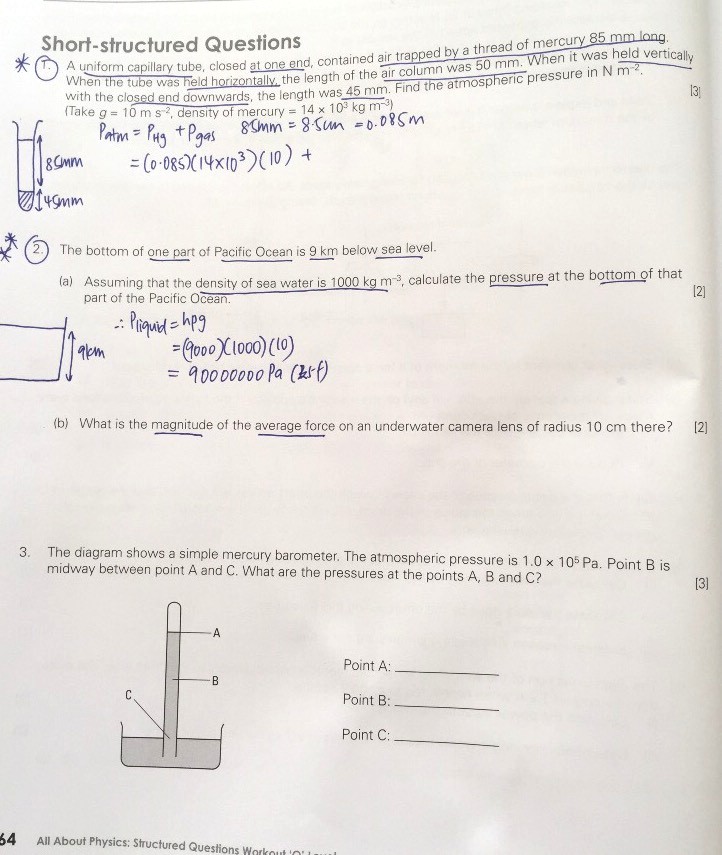Ask Singapore Homework?
Upload a photo of a Singapore homework and someone will email you the solution for free.

Question
secondary 4 | A Maths
One Answer Below
Anyone can contribute an answer, even non-tutors.

Even after studying the topic of barometer I still don’t get how barometer works and I’m unable to solve the qns as well as I don’t understand the solving steps and methods. Would appreciate an explanation as well as worked solution.
See 1 Answer
Lets think about an experiment that most people have seen before. The water level rises in the cup, because as the oxygen is being used up, a partial vacuum forms at the top of the cup. This causes air pressure to act on the water, forcing it into the cup and thus equalising the pressure at the water surface with the surrounding air pressure.
Similarly, a barometer has a vacuum at the top of the capillary tube, which causes the mercury to be “sucked into” the tube. (Mercury is used because of its high density. If water was used, you would need a SUPER long tube.)
Now, as mentioned before, the mercury surface in the bigger tub has the same pressure as the surrounding air.
In the tube however, there is no air pressure because, well, there is NO air. So, the only force acting on the mercury is its own weight.
Lets recall : F = mass x g.
F = (density x volume) x g.
Now, volume = (pi) x (radius)^2 x (height)
In the formula P = height x density x g,
it is assumed that because the cross sectional area of the tube is negligible, the only term that is important is the height.
So now, we recover F = density x height x g.
So pressure that we read off the barometer, is just the weight of the mercury above.
Hope this helps! :)



